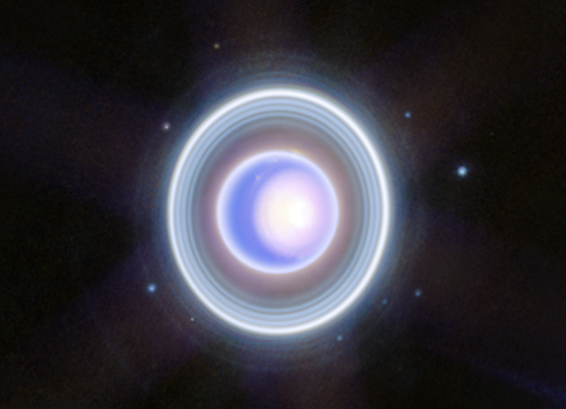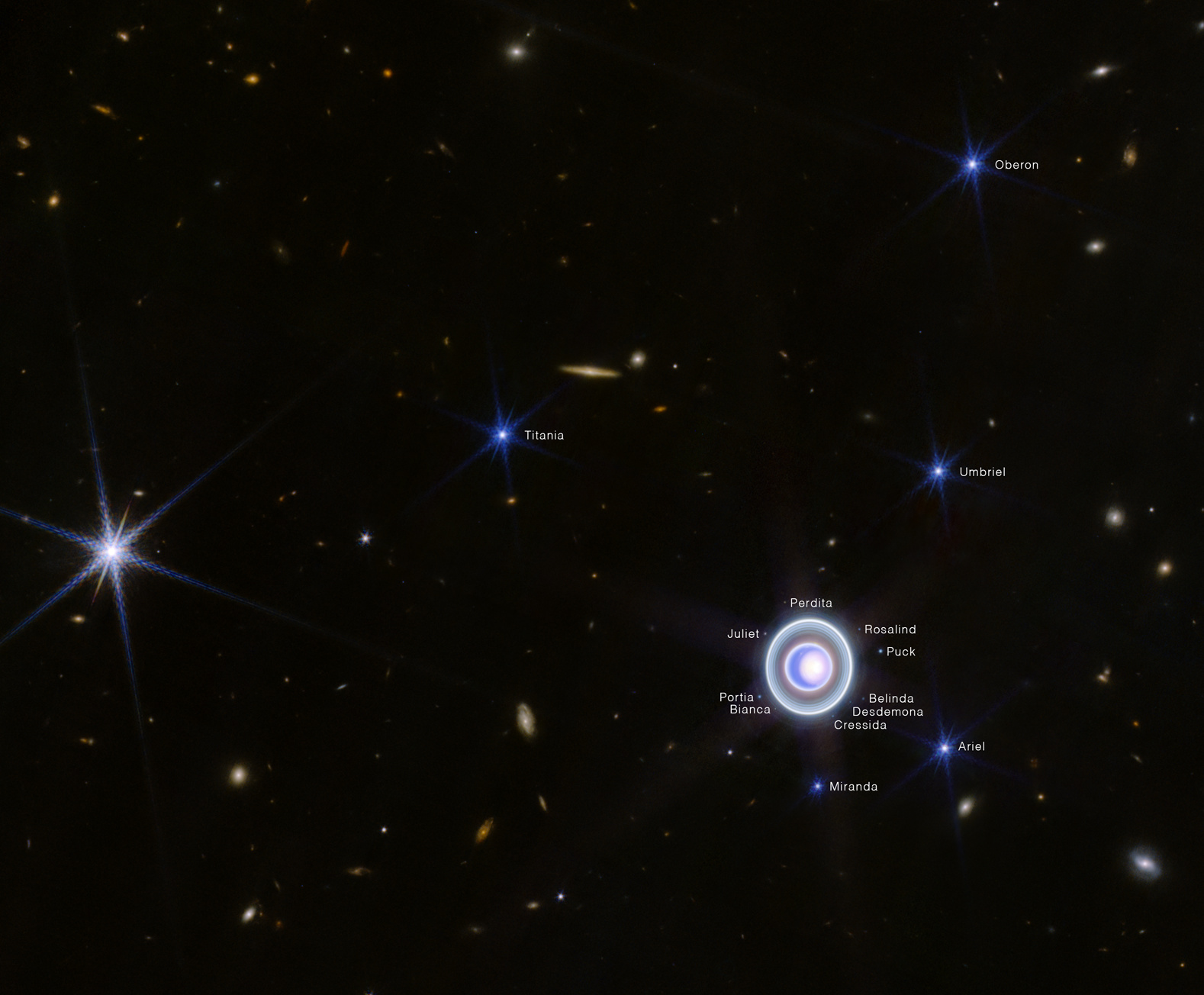Uranus in a New Light
Wide-field image of Uranus wth distant galaxies background, 12-18-2023 (credit: NASA/JWST)
Uranus is the seventh planet in the solar system. It can almost be considered a solar system by itself being surrounded by more than 25 moons.
According to NASA, the James Webb Space Telescope (JWST) focuses its infrared camera on this strange planet, an ice giant spinning on its side. Newly captured images show Uranus with its multiple rings, moons, and dynamic weather patterns in glorious clarity. With its high sensitivity, the Webb saw the inner and outer rings as well as an extremely faint ring closest to the planet. The new image has Uranus’s seasonal north polar cap, including the bright, white, inner cap at the bottom.
The composite photograph was obtained using the laboratory's near-infrared camera (NIRCam) to present all these planetary details. The invisible infrared (IR) light has been translated into the visible-light colors we perceive using a 'color key' on filters collecting each infrared band. The color of each filter corresponds to visible light color used to represent each IR wavelength as it passes through the NIRCam's sensors.
The remarkable image also shows nine of the planet’s moons as blue dots surrounding the rings of Uranus. These include: Rosalind, Puck, Belinda, Desdemona, Cressida, Bianca, Portia, Juliet, and Perdita. These moons all share the same tilted 98-degree angle of Uranus in relation to the plane of the overall solar system.
One day on Uranus is about 17 hours, so the planet’s rotation moves quickly. This makes the planet difficult for ground-based observatories to capture one simple image. This Webb image combines several long and short exposures of this moving system to correct for changes in positions while the telescope was focused on the planet.


Uranus and moons in Infrared, 12-18-2023 (credit: JWST/NASA) Uranus with named moons
The Jet Propulsion Laboratory in Pasadena produced a visual perspective on the power of infrared cameras, the photographs they can produce, and a brief history of their earlier use.
Looking at the beautiful rings of Uranus, it is not hard to imagine an entirely new solar system. How many more distant exo-planets and moons await discovery by the IR camera on the Webb? WHB